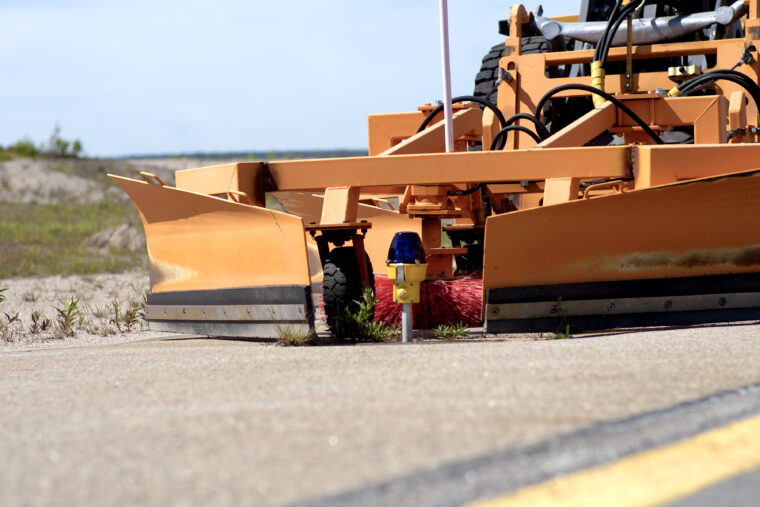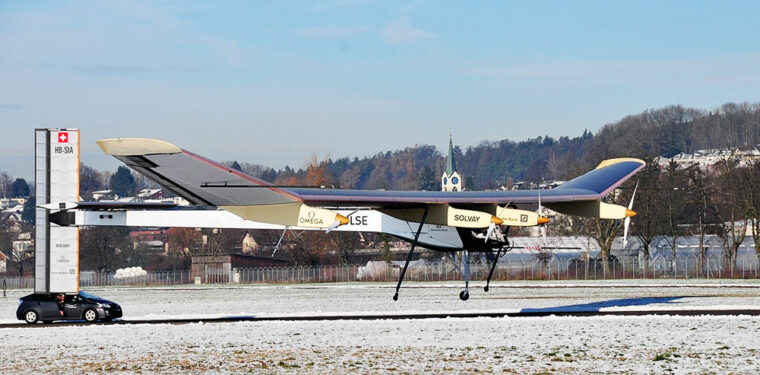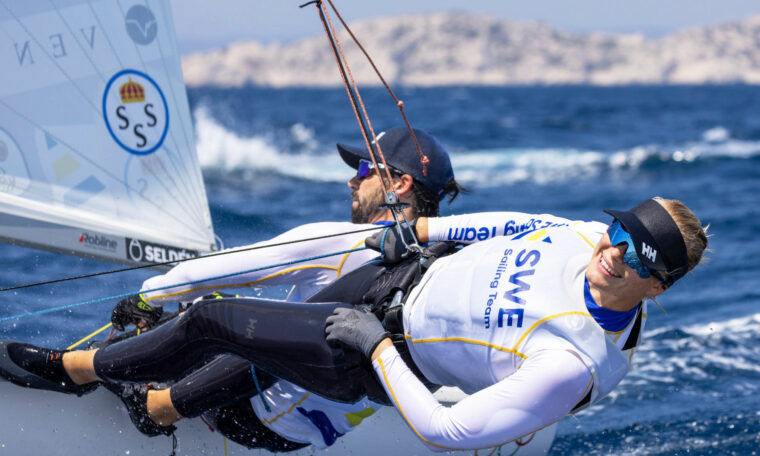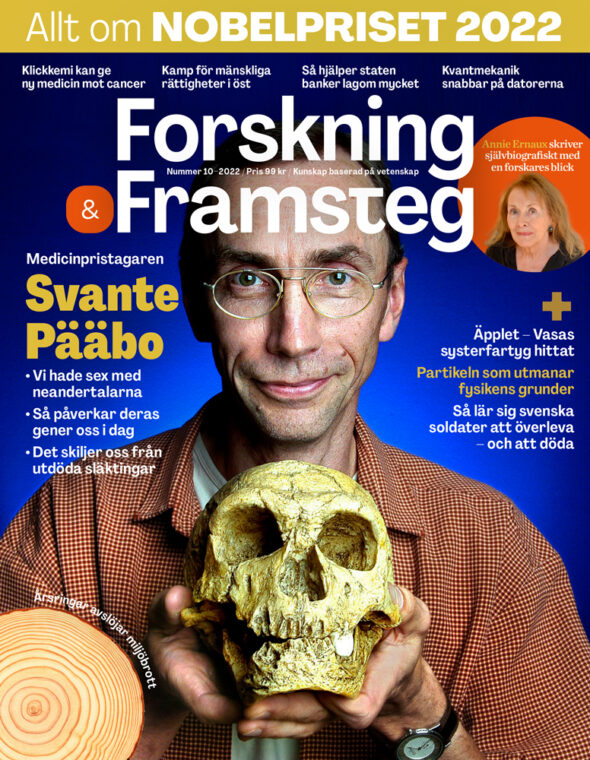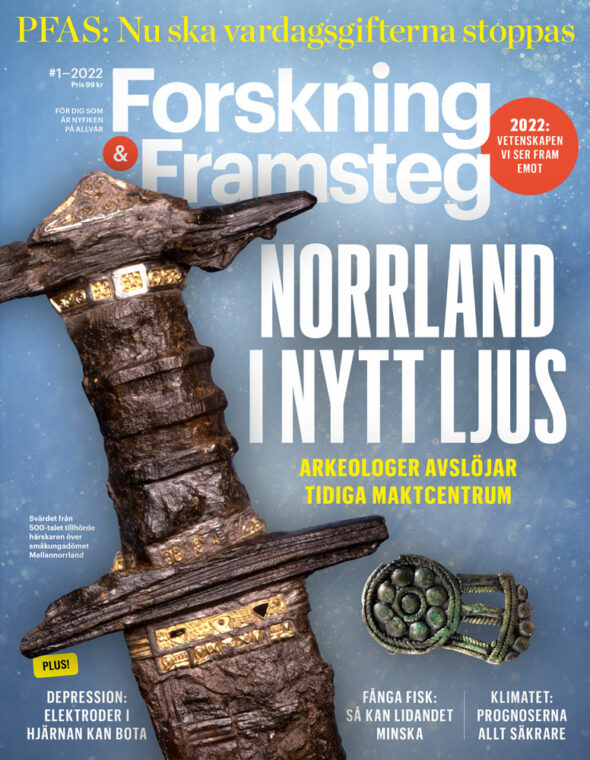Var Bröderna Wright först?
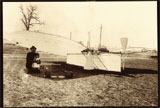
Det bästa belägg som finns av Gustave Whiteheads första flygningar är en teckning och en tidningsartikel. Ögonvittnet och sportjournalisten Dick Howell rapporterar i Bridgeport Sunday Herald om ett lyckat 800 meter långt luftskutt. Datumet är den 18 augusti 1901, två år före bröderna Wright bevisligen flög sin Flyer 1.
Gustave Whitehead föddes som Gustav Weisskopf i Böhmen år 1874. Han utvandrade till USA 1894 och tog namnet Whitehead. Efter flera flygförsök byggde han ett plan med hopfällbara vingar. Planet kallade han nummer 21. Vad motorn gick på för bränsle är oklart, men det är det planet som flera vittnesmål påstår har flugit, bland dem sportjournalisten Howell.
Det finns gott om fotografier på planet när det står på marken men ingen flygbild. I brist på bevis har tyska entusiaster som sökt upprättelse för Gustave Whitehead byggt en kopia av flygplanet. År 1997 flög en pilot för första gången med kopian.
Historieböckerna brukar tillskriva händelserna vid Kitty Hawk i North Carolina, den 17 december 1903, som första gången då människan kontrollerat flög ett motordrivet flygplan. Då var det Wilbur Wright som vid spakarna på The Flyer 1 gjorde sammanlagt fyra lyckade flygningar. Den sista och längsta på nära en minut och 243 meter. Fortfarande vidhåller också flygauktoriteten Smithsonian Air and Space Museum i Washington att bröderna Wright var först. Deras huvudinvändning är att om Whitehead verkligen kunde flyga, varför fortsatte han inte att förfina sin konstruktion? Han försökte bygga helt andra saker, bland annat en mycket märklig helikopter.
Aspiranter på att vara först finns även i andra världsdelar. På Nya Zeeland finns personer som försöker lyfta fram Richard William Pearse som förste flygare. Och fransmännen påpekar gärna att Clément Aders första flygförsök ägde rum redan år 1890. Med sin Éole skuttade han 50 meter. Den otympliga skapelsen var dock svårflugen med sina rörliga vingar och ångmaskin till motor.
Bröderna Wright var först
A theme that always seems to create enduring interest is the question of ”who was first?” Who was the first to surpass some benchmark of human physical endurance, the first to set foot on a remote landscape, the first to achieve some milestone of human accomplishment? This preoccupation with being first is perhaps nowhere more in evidence than in the history of invention. The notion of establishing priority of invention goes beyond mere recognition, it is institutionalized in the form of the patent system.
The airplane is no exception when it comes to rival claims to invention. Even though it is generally accepted by professional and lay historians alike, the aviation community, and the public at large, that Wilbur and Orville Wright built and flew the world’s first powered, heavier-than-air flying machine, there exists minute pockets of support for as many as a dozen experimenters who are purported to have flown before the Wrights.
For example, in 1874, Félix du Temple made the first powered takeoff in an airplane, but it did not sustain itself. Ten years later, the Russian Alexander Mozhaisky made another of these unsustained leaps into the air after traveling down a ramp. In 1890, Clément Ader made an uncontrolled hop in a steam-powered craft called the _ole. In 1894, the famous inventor Sir Hiram Maxim staggered briefly off the ground in a huge, four-ton machine. In 1898, Augustus Herring mounted an engine on one of his hang gliders and skimmed hesitantly above the ground at an altitude of one foot for a short distance. The New Zealander, Richard Pearse, made a powered glide in 1904 which some argue actually took place in 1903. The list could go on.
The pre—Wright claimant that has received the most attention is Gustave Whitehead. However, it is important to stress that he is only one of many. The history of early aviation does not revolve exclusively around the Wrights and Whitehead. They were among a large group of turn-of-the-century aeronautical pioneers attempting to achieve flight.
Having made these contextual comments, what follows is a brief analysis of the evidence in support of the Whitehead claim. One of the things that makes the Whitehead story seemingly creditable is the shear volume and complexity of the references to his purported flights. The evidence for Whitehead is scattered in many disparate sources that require considerable interpretation and qualification. Nonetheless, it can be shown that this evidence does not support the claim that Gustave Whitehead was the first to fly.
To assemble all the references to Whitehead and adequately explain them would require a small book. As a short cut, what I will do here is to tick off some of the major claims made in favor of Whitehead, along with the evidence his supporters suggest as proof. I will then show how these claims and evidence can be refuted.
One of the easiest ways to familiarize yourself with the evidence on Whitehead is to consult William O’Dwyer’s History By Contract. O’Dwyer, a leading proponent of the Whitehead claim, fails to make his case in favor of Whitehead, but the book does have reprints of most of the original articles, depositions, photographs, etc., related to Whitehead. It provides a convenient, one-stop reference for most of the Whitehead material.
The Points of Contention
The major claim is that Gustave Whitehead flew a powered, heavier—than—air flying machine before the Wright brothers flew in 1903. Whitehead supporters do not refute any of the established facts about what the Wrights did, they just maintain that the Whitehead machine flew first.
Whitehead built a number of aircraft, but the one that is the subject of the primary claims was known as the ”No. 21.” There are many scattered flight claims for Whitehead in various aircraft. For example, he is purported to have made a flight in a steam-powered machine in Pittsburg, Pa., in 1899, crashing into a three—story building to boot. There is no real evidence to support this claim. Even the Whitehead supporters do not press this story very hard. The principal flights that they are trying to demonstrate took place are the following:
A) Whitehead allegedly made four flights on August 14, 1901, in a machine called the ”No. 21.” One was claimed to have been a half-mile in length, another one-and-a-half miles.
B) Whitehead is also supposed to have made flights of two miles and seven miles over Long Island Sound on January 17, 1902, in an identical airplane called the ”No. 22.”
I will confine this discussion to the evidence regarding these flights.
The Flight Claims of 1901 and 1902
The August 18, 1901, issue of the Bridgeport Herald carried a story entitled ”Flying,” complete with witches on brooms at the top. It appeared in a section of the paper that was something like a modern-day style section. The author, Richard Howell, claimed that Whitehead made four flights that day, the best being _ mile and 1_ miles. It is a long article and has many elements that can be picked apart. However, the most significant has to do with the reported eyewitnesses.
Howell states that Whitehead had two assistants, James Dickie and Andrew Cellie. In the 1930s, when research began into the claims of Gustave Whitehead, Dickie was interviewed and in a signed statement remarked:
”I worked with the late Gustave Whitehead when he was experimenting with the construction of airplanes almost from the time he came to Bridgeport…. I put small sums of my own money into his experiments…. I believe the entire story of the Herald was imaginary, and grew out of the comments of Whitehead discussing what he hoped to get from his plane. I was not present and did not witness any airplane flight on August 14, 1901. I do not remember or recall ever hearing of a flight with this particular plane or any other Whitehead ever built.”
Dickie went on to say that he did not know Cellie, nor does Cellie’s name appear in any local directories of the period.
In April of 1902, in a letter to the editor of the American Inventor, Whitehead claims to have made 2 flights on January 17, 1902, one of 2 miles and one of 7 miles. When interviewed, Whitehead’s wife and family said they had no knowledge of these or the August 1901 flights. How strange, having solved one the world’s oldest scientific/engineering problems with such spectacular success, Whitehead would neglect to mention it to his wife?
One of the Whitehead supporters’ most important witnesses was a man called Junius Harworth. He signed a statement in 1934 saying that he was present for the 1901 flights and provided details of the machine. First, Harworth was only 11 years old when the flights would have taken place, hardly old enough to be beyond youthful exaggeration. Second, the details he gives concerning the engine differ significantly with Whitehead’s own descriptions. You cannot believe the part of a statement that says he flew and disregard the conflicting parts. Most importantly, his credibility is compromised because he was collaborating with a writer named Stella Randolph in the preparation of a book on Whitehead, Lost Flights of Gustave Whitehead, published in 1937, receiving ten percent of the profits for his trouble.
And then there are the Scientific American references. In the June 8, 1901, issue, Stanley Yale Beach, auto and aero editor for the magazine, and son of the publisher, wrote an article about the Whitehead machine. He discusses some technical details of the machine and shows two photographs of the airplane on the ground. In the January 27, 1906, issue, in an article about the first Aero Club show, it states that there is a photograph of the machine in flight on the wall. In the December 15, 1906, issue, there is an article on the second Aero Club show. In that article it states the airplane is on exhibit.
This is a difficult one, but it too can be answered. There are several photographs of the No. 21 on the ground. These were widely circulated and published. If Whitehead had an in-flight shot, why would he not circulate and publish that most crucial, credibility providing one as well? Moreover, Whitehead’s only comments on images of his airplane in flight are rather evasive. In the 1902 American Inventor letter to the editor, when the editor asked for greater substantiation to his earlier published claims, Whitehead responded:
”I attempted this [photography] before, but in the first trial the weather was bad, some little rain and very cloudy sky, and the snapshots that were taken did not come out right. I cannot take any time exposures of the machine when in flight on account of its high speed.”
Such problems did not prevent the Wright brothers, Chanute, Herring, Langley, or any other early pioneer from photographing their aircraft in flight. If Whitehead was admittedly unable to make photographs of his machine in flight, then where did the one from the Aero Club show come from? Whitehead began building copies of Chanute-type biplane hang gliders in 1902 and 1903. It may very well have been an in-flight photograph of one of these gliders, which do exist, that appeared at the 1906 Aero Club show.
There is also a brief mention in a Bridgeport paper in 1904 of photographs of Whitehead’s airplane in flight in the window of Lyon and Drummonds hardware store. Again, these could very likely be the glider pictures I refer to above. It would not be the first time that the press unwittingly substituted similar, but different, pictures to illustrate a story. Look at the recent N.Y. Times/Washington Post miscue on Comet Halley where they ran a photograph taken in 1910, claiming it to be of the 1986 pass. At a time when the technology of aerial navigation was so new, it is not unlikely that people would have difficulty distinguishing between powered and unpowered aircraft.
The most important and straight forward comment on Whitehead by Stanley Yale Beach of the Scientific American, however, appeared in a statement he made in 1937. The critical passage of the seven-page statement is as follows:
”Again I say that I do not believe that any of his machines ever left the ground under their own power in spite of the assertions of many persons who think they saw him fly. I think I was in a better position, during the 9 years that I was giving Whitehead money to develop his ideas, to know what his machines could do, than persons who were employed by him for a short time or those who have remained silent for thirty-five years about what would have been an historic achievement in aviation.”
Although there is no author cited, it is likely that Beach wrote the early Scientific American articles because he was the auto and aero editor for the journal. Moreover, he was a principal source of funding for Whitehead. If that photograph on the wall at the 1906 Aero Club show really was of No. 21 in flight, it makes it hard to understand the comments quoted above.
Another of Whitehead’s financial supporters, Herman Linde, was also dissatisfied with his investment. So much so that he sued Whitehead over a small amount of money concerning lumber in 1902. Strange behavior given that Whitehead made the world’s first successful flights the year before. (see Bridgeport Evening Farmer, April 5, 1902.)
In addition to the Junius Harworth statement, the Whitehead supporters have amassed much testimony from individuals who say they saw Whitehead fly, heard he flew, knew him, etc. Nearly all such statements were taken many years after the fact, and are confusing and conflicting. Often what they have done is taken the one positive element from a statement and ignored the rest. If part of a statement is refuted, you cannot accept another part without question.
Just as there are statements attesting to Whitehead’s talent as an engineer and moral probity, there are also statements that suggest otherwise. Charles Manly, after receiving a report from someone who inspected the No. 21, pronounced Whitehead ”a fraud insofar as he claims to have flown in the machine, since I understand the construction is so flimsy that I seriously doubt whether the framework would hold together with an engine mounted in it and developing the twenty horsepower which Whitehead claims to have.”
In an 1897 letter from Samuel Cabot of the Boston Aeronautical Society to Octave Chanute, there was this assessment of Whitehead: (Whitehead was employed as a mechanic by the BAS)
”Weisskopf [the original German spelling of his name] so far has made a conspicuous failure with his apparatus, and I fear that he is a pure romancer with a supreme master of the art of lying.”
In a second letter dated 11 days later, Cabot had this to say:
”He very foolishly attempted his experiments in a place which would have been very dangerous had he got a flight, and it was so lacking in the proper conditions for a quick fall at first that he was, in my opinion, condemned to disappointment from the beginning.”
He is talking about someone who he has hired to build a flying machine for the Boston Aeronautical Society, hardly a glowing recommendation.
These are some of the key pieces of evidence and how they fail to stand up under objective scrutiny. One of the best pieces that counters all the Whitehead evidence is an article by John Crane entitled, ”Did Whitehead Actually Fly,” published in 1936. He hits on many of the points I have covered here and several others. It is the best single piece to read to refute the Whitehead claim.
Aside from the things I have cited above, there remains one extremely puzzling aspect of the case, though completely circumstantial, that I think destroys the credibility of the Whitehead claim. If the No. 21 was so successful, why does Whitehead completely drop the design and continue with antiquated hang gliders based on Chanute and Lilienthal? As I said earlier, he begins working with these out—of—date designs around 1902 or 1903, just when he is supposed to have solved the problem of powered flight. Why? Moreover, many of the photographs of these gliders show them tethered. Again, very strange for someone who claims to have already flown seven miles over water! Whitehead then proceeds to build several large ungainly, poorly designed aircraft with the funds of Stanley Yale Beach. None of these ever leave the ground.
It would seem reasonable that in light of these consistent failures following the supposed successes of 1901 and 1902, there could be little chance of the No. 21 having flown either.
Peter L. Jakab
National Air and Space Museum
Smithsonian Institution


